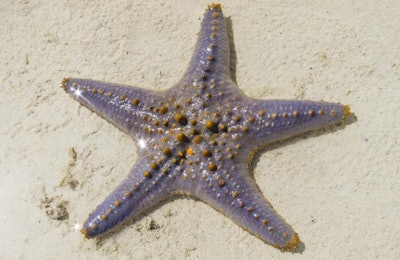
Danish chickens may soon be finding something a little unexpected in their feeding pans. The country’s pigs may also be enjoying the same surprise.
An amendment to European Union legislation will soon give the green light for the use of starfish in pig and poultry feed, and production could be up and running by late next year.
Starfish meal is not expected to change the animal feed market, but it will at least give Denmark’s pig and poultry producers access to an additional feed ingredient that contains 70 percent raw protein, and has a better amino acid composition than vegetable alternatives.
And Denmark’s poultry and pig producers won’t be the only ones to benefit, the country’s mussel producers will also gain from turning what is currently a predator into a new source of profit.
Win-win
Researchers have looked at the Limfjord, in the northwest of Denmark and which, according to legend, was formed by the diggings of a giant pig, where starfish are damaging the local mussel industry and putting its future at risk.
Per square meter, there can be up to 50 common starfish in the Limfjord, and they can deplete mussel bottom culture mussel beds within days, posing a significant threat to farms.
The starfish are, in fact, already often harvested, but sent Poland for processing into fish feed. However, processing at home and turning them into poultry feed would be a much more profitable and environmentally friendly solution, and a boost to fishmeal production.
Addressing a threat
Targeted starfish fishing techniques have already been developed using a specifically designed environmentally friendly starfish beam trawl, which is effective in targeting starfish, meaning hens won’t be able to look forward to getting mussels instead.
Starfish had been excluded from fishmeal due to concerns over transmissible spongiform encephalophathies (TSEs). However, the exclusion was the result of an oversight, rather than a specific risk, and now this is due to be rectified. There will be no starfish bonanza, however, as harvesting of wild starfish for fishmeal will only be permitted where they are multiplying and represent a threat to aquaculture production.
It is hoped that by the end of next year, a starfish meal plant will be up and running in Denmark with the capacity to process 10,000 tons of starfish each year, turning them into 2,500 tons of meal.


















